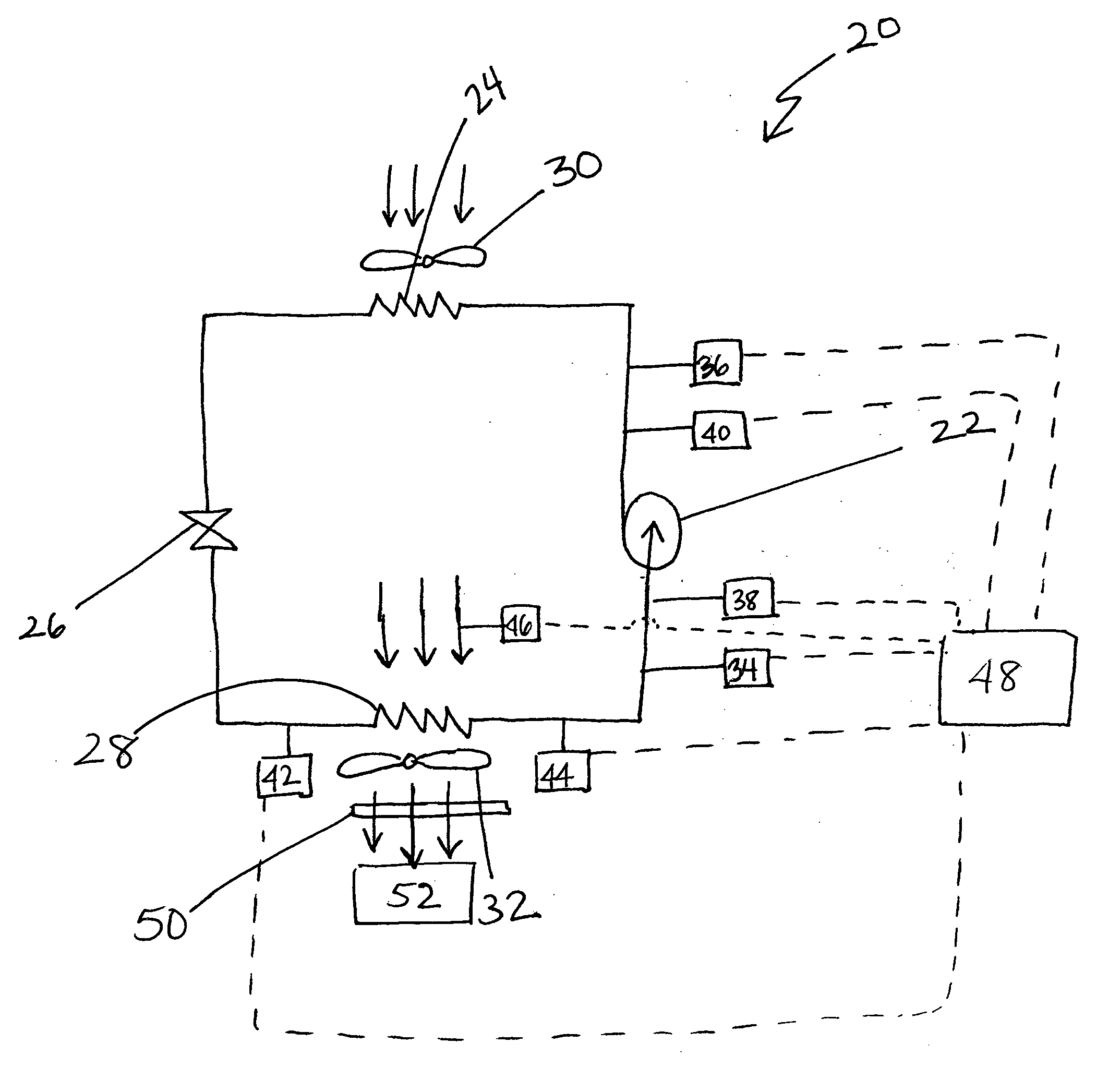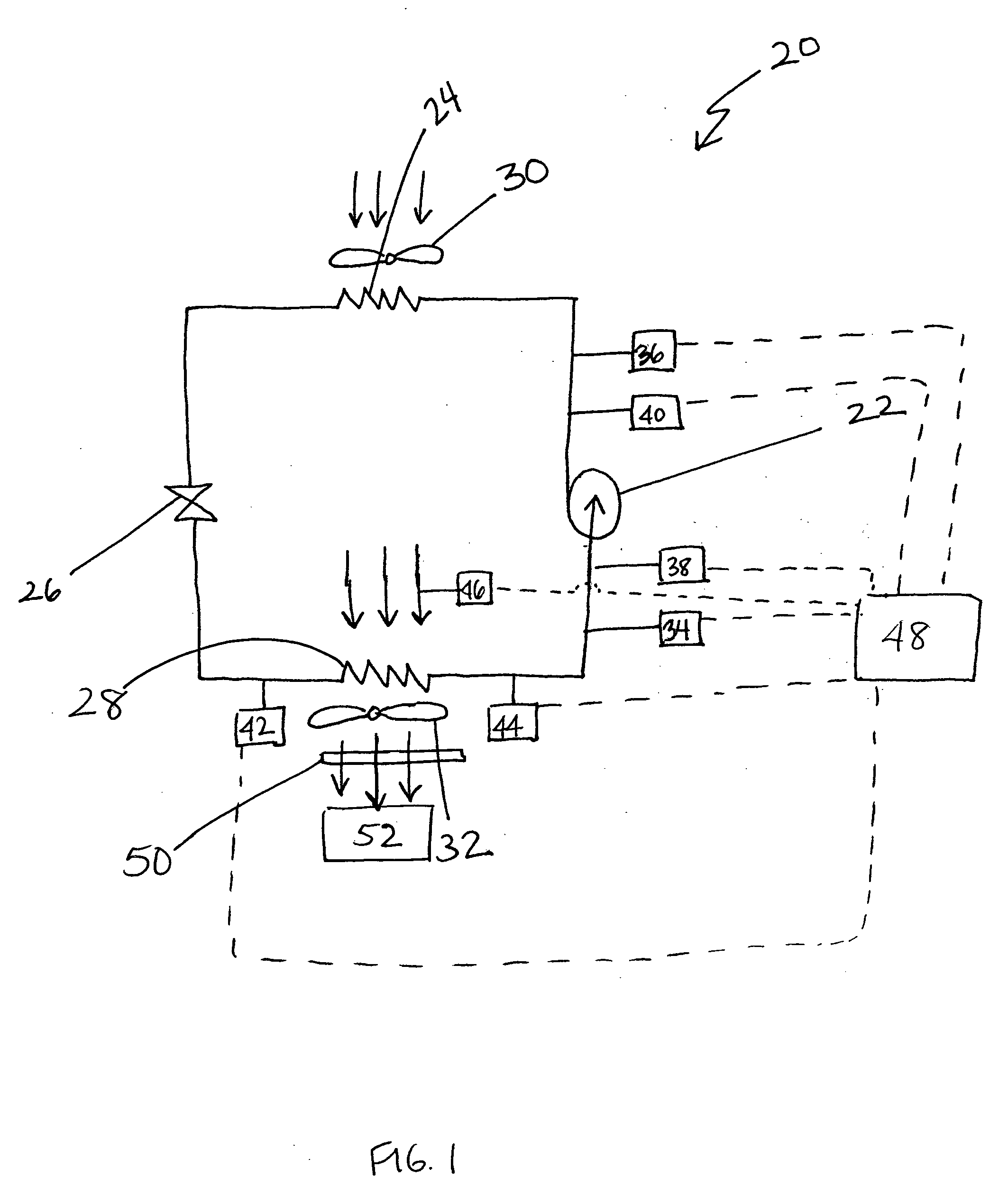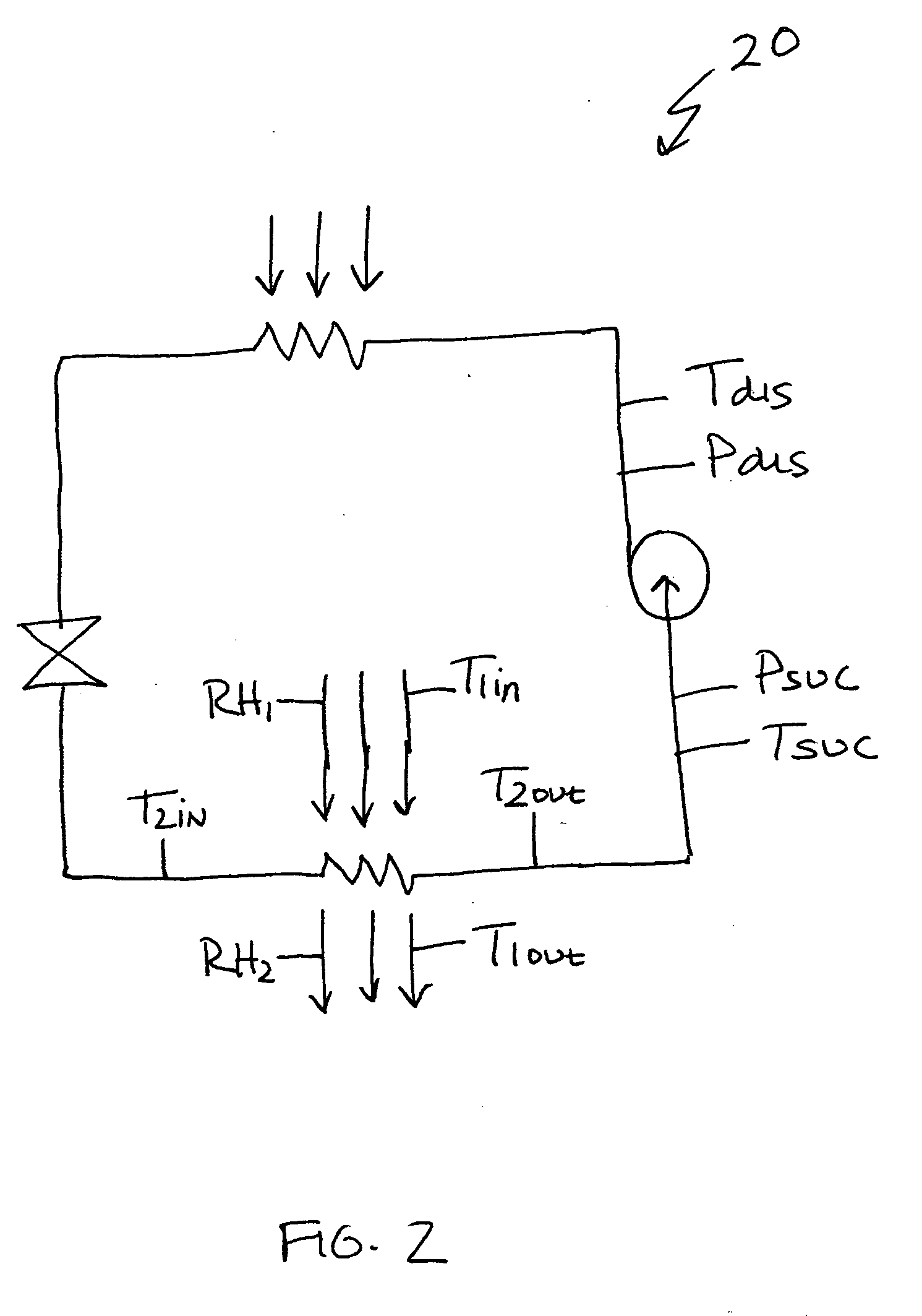Method for detecting a fault in an HVAC system
a fault detection and hvac system technology, applied in the direction of refrigeration safety arrangement, refrigeration components, electric supply techniques, etc., can solve the problems of reducing the coefficient of performance, the air filter is beginning to clog, and the bypass factor decreases
- Summary
- Abstract
- Description
- Claims
- Application Information
AI Technical Summary
Benefits of technology
Problems solved by technology
Method used
Image
Examples
Embodiment Construction
[0018]FIG. 1 illustrates a vapor compression system 20 including a compressor 22, a condenser 24, an expansion device 26, and an evaporator 28. Refrigerant circulates though the closed circuit vapor compression system 20.
[0019] When the vapor compression system 20 is operating in a cooling mode, the refrigerant exits the compressor 22 at a high pressure and a high enthalpy and flows through the condenser 24. In the condenser 24, the refrigerant rejects heat to a fluid medium, such as water or air, and is condensed into a liquid that exits the condenser 24 at a low enthalpy and a high pressure. If the fluid medium is air, a fan 30 is employed to direct the fluid medium over the condenser 24. The cooled refrigerant then passes through the expansion device 26, and the pressure of the refrigerant drops. After expansion, the refrigerant flows through the evaporator 28. In the evaporator 28, the refrigerant accepts heat from air, exiting the evaporator 28 at a high enthalpy and a low pre...
PUM
| Property | Measurement | Unit |
|---|---|---|
| pressure | aaaaa | aaaaa |
| velocity | aaaaa | aaaaa |
| temperature | aaaaa | aaaaa |
Abstract
Description
Claims
Application Information
 Login to View More
Login to View More - R&D
- Intellectual Property
- Life Sciences
- Materials
- Tech Scout
- Unparalleled Data Quality
- Higher Quality Content
- 60% Fewer Hallucinations
Browse by: Latest US Patents, China's latest patents, Technical Efficacy Thesaurus, Application Domain, Technology Topic, Popular Technical Reports.
© 2025 PatSnap. All rights reserved.Legal|Privacy policy|Modern Slavery Act Transparency Statement|Sitemap|About US| Contact US: help@patsnap.com



